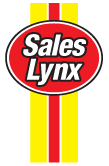Dealerships
looking to increase their profits in their sales department have traditionally
focused on two key areas – increasing the prospect conversion rate, and
increasing gross profit per sale. But there is only so far you can go
with that.
There
is undoubtedly some potential to improve the prospect conversion ratio in most
dealerships. The true industry average
is probably no more than 10% or so. Many
dealerships believe their figure to be higher, but they often fail to take
account of selective logging in the showroom.
The top performers are probably achieving 20%. But even with a tightly-controlled sales
process in place it is hard to get beyond the 20% level – not least because of
the quality of people employed in the industry, and the prevailing
salary/commission structures.
Increasing
the profit per sale is even tougher. In
a mature, competitive market, raising your prices is often not an option. And raising your gross profit by a
significant amount without raising prices is extremely hard work – even before
you take into account the increasing costs of holding a franchise in the
post-Block Exemption environment. You
don’t just have to sell better, you have to buy better as well.
One
alternative is to sell more accessories, or more finance. F&I has long been seen as a way to
increase profits, but that too is under increasing pressure, not least from the
legislative authorities. And if you look
at the trends in the USA, with the controls they now have coming in such as the
disclosure of finance commission that pressure seems certain to increase.
During
the past ten years or so the industry has focused more on increasing the
customer’s repurchasing frequency as a way of increasing profits. Ford set the ball rolling when it brought out
the Options PCP. It was designed to
increase the frequency with which customers change their cars, and to make sure they came
back to the dealership they bought them from in the first place. When they saw how successful it was, the rest of the
industry soon followed. But because PCPs
are linked to residual values there is a risk involved, as the industry found
to its cost on both sides of the Atlantic.
Now
that residual values appear to have stabilised, the PCP is regaining
popularity. But there’s a clear need for
the industry to develop new products that lock customers in and drive them back
to the dealership, which are not tied to residual value risks.
We’re seeing some of those products being
developed in the USA today, in the form of tyres-for-life and engines-for-life
programs. Dealers who have embraced
them are achieving some success in terms of getting customers to come back to
the dealership more often – or even at all!
The
tyres-for-life guarantee is not sold as an add-on product, it is built into the
selling price of the car and customers have to come back to the dealership
every three months or 3,000 miles for a quick tyre inspection. The engine-for-life package requires
customers to keep coming back to the dealership in line with the manufacturer’s
service intervals.
With
tyres for life, the warranty company that funds the program can buy the tyres
in bulk, which keeps the cost down and makes the programs viable. It is based on the fact that the average
customer changes car every 27 months, which typically equates to one set of
tyres (it also helps the used car department, because every used car that goes
out has a new set of tyres on it).
Customers
who keep their cars for longer than that are more likely to come back to the
dealership when their tyres need replacing – where else can they get them for
free? And that gives the dealership an
opportunity to sell other products and services if it is handled in the right
way by the service advisor. If not, it
may be perceived as a rip-off. The
customer may feel you are simply loading as much as you can onto the invoice.
Increasingly,
US dealerships are putting more of their marketing budget into activities like
these, and reducing the amount they spend on traditional advertising. That represents something of a
sea-change.
The
motor trade is less good than some other industries – companies like Apple, Dell,
EasyJet and Ryanair spring to mind – at marketing additional products to their
customer base. On a regular basis these
companies will come back to you offering additional products and services. If you buy a computer from Dell, for example,
they will continue to offer you consumables, or a new laptop 12 months after
you’ve bought one, or an upgrade to your home system 12 months after you’ve
bought one. Easyjet and Ryanair sell travel insurance, hotel bookings and car
hire, plus of course their in-flight services.
For
the motor trade your used car stock offers you a considerable opportunity. A dealership database is perfect for
marketing to. Who’s to say that of the
5,000 or so customers you have on your database, 200 aren’t going to be
interested in a new used car right now? It is good CRM.
The
key of course is a clean, up to date database. If you have that in place you
can market additional service products, you can market to lapsed service customers,
you can market to lost sales prospects….. the list goes on.
But
the next generation of CRM strategies will encompass products that lock
customers in to the dealership – because if you have got your customers locked
in, once you start to tweak their repurchase frequency through your marketing
activities you can start to see serious growth in your profits.



















